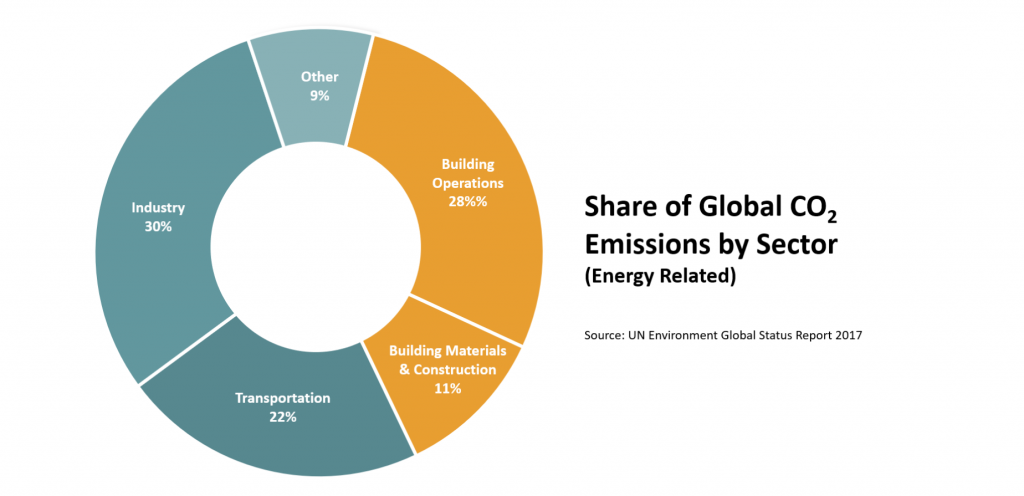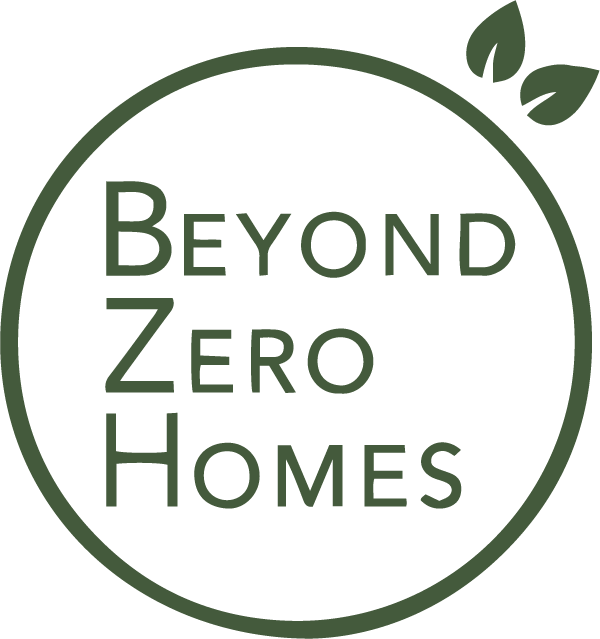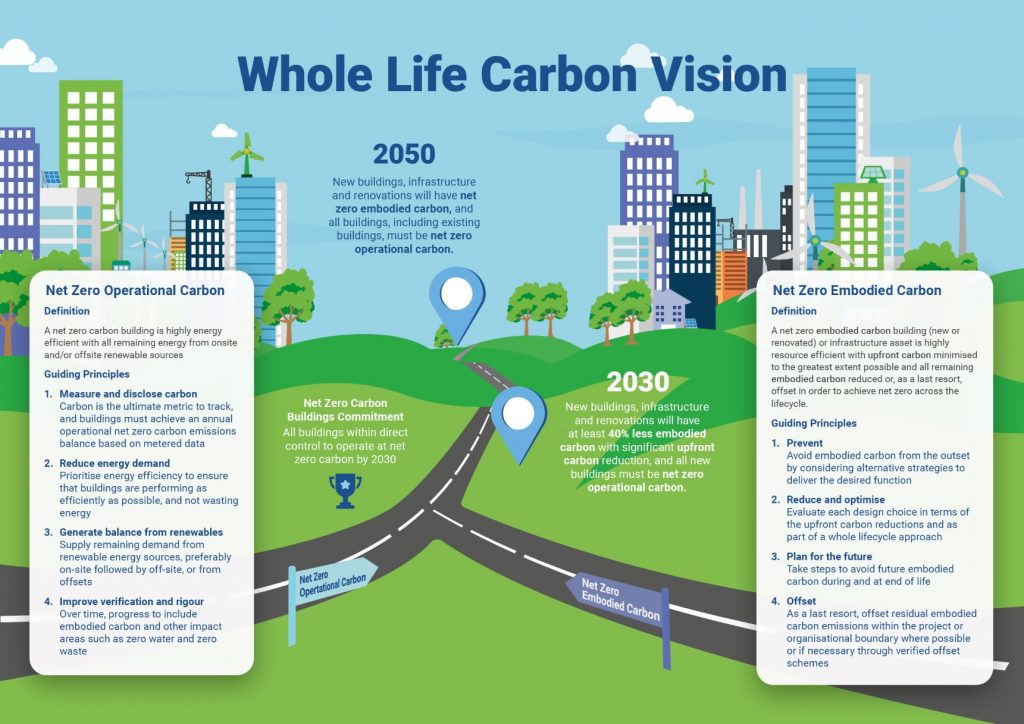by Daniel Doran, Craig Jones and Will Garner, Circular Ecology
The building, operation and maintenance of buildings accounts for 39% of total global carbon emissions. In the UK 28% of emissions relates to domestic buildings alone. Accurate measurement of carbon impact is a vital component in all building developments, and Beyond Zero Homes are therefore delighted to have the Circular Ecology team on board, providing their expertise measuring the carbon impact of the COP26 House. Here they outline the approach they are taking.
The key aim for the COP26 House is to truly minimise whole life carbon. To achieve this, the designer – Peter Smith, from Roderick James Architects – has looked to maximise the use of responsibly sourced timber-based materials where they offer naturally low embodied carbon emissions.

Timber as a carbon store
The COP26 House utilises timber’s carbon storage properties, known as biogenic carbon or carbon sequestration. The amount of carbon stored in the COP26 House could match or even exceed the upfront carbon emissions at completion of the build. This would mean the final project being zero carbon or even carbon negative – avoiding the need to offset residual carbon. This offsetting is normally required for the ‘net’ in ‘net zero carbon’.
Carbon emissions could remain zero/negative for many decades or until the house is eventually demolished at the end of its life – a life that’s expected to exceed 60 years. At this point, the stored carbon within the timber would usually be returned to the environment. However, to minimise the carbon emissions even further, this house has been designed from the outset for simple disassembly. At the end of its life the constituent construction products may be easily re-used or recycled. Although this benefit cannot be counted in the house’s whole life cycle carbon results, future re-use and recycling should keep the carbon stored for much longer.
Whole Life Carbon Measurement
Besides demonstrating what can be achieved using low carbon construction products, Circular Ecology’s whole life carbon measurement of the COP26 House reflects the carbon benefit of lower operational energy emissions and circularity principles. These principles include minimising resource consumption, responsible local sourcing, and designing for reuse and recycling.
The whole life carbon measurement of the COP26 House includes both embodied carbon and operational carbon across its whole life cycle. Circular Ecology are using the widely recognised RICS methodology [note 1], based on EN 15978:2011 [note 2], as required by the RIBA and UK Green Building Council for measuring the carbon emissions of buildings.
UKGBC Whole Life Carbon Vision:
Providing a showcase for the approach
Standardised whole life and embodied carbon measurement of buildings has been available for over ten years. In the last few years in particular, organisations like Circular Ecology have seen a rapid increase in interest in embodied carbon from forward thinking projects – like the COP26 House. However, much of the construction industry remains relatively unfamiliar with embodied carbon, its importance and how to reduce it.
One of the key motivations for all members of Beyond Zero Homes through their involvement with the exemplar COP26 House is to openly share the approach we are taking. By doing so, we hope to draw greater attention to this increasingly important source of carbon emissions and showcase how to take action.
Read more:
The Carbon Impact of the COP26 House .
For definitions of some of the most common environmental terms, see Circular Ecology’s Environmental Glossary.
Note 1: Developed by the Royal Institution of Chartered Surveyors (RICS), the RICS Methodology provides professional standards and guidance for whole life carbon assessment for the built environment. https://www.rics.org/globalassets/rics-website/media/upholding-professional-standards/sector-standards/building-surveying/whole-life-carbon-assessment-for-the-built-environment-1st-edition-rics.pdf
Note 2: S EN 15978:2011 Sustainability of construction works. Assessment of environmental performance of buildings. Calculation method. https://shop.bsigroup.com/ProductDetail?pid=000000000030256638

